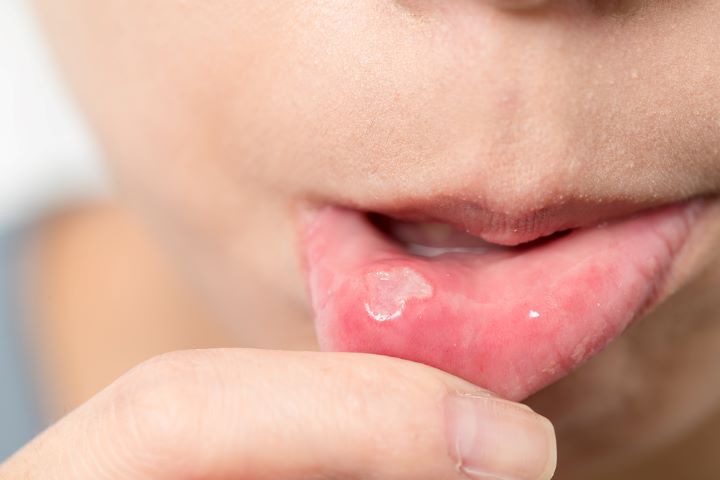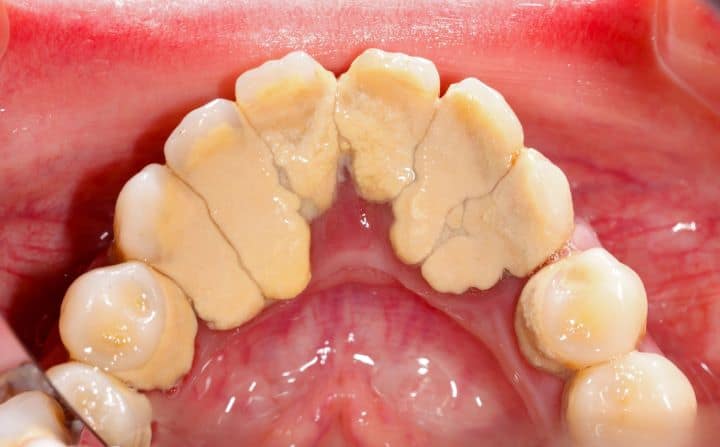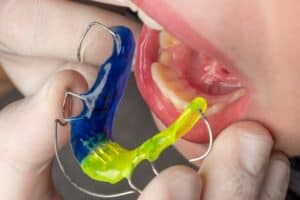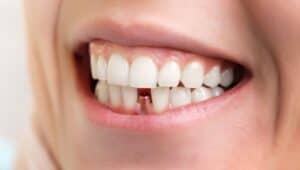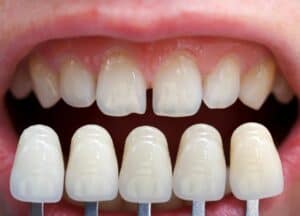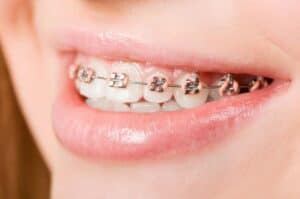Have you ever seen someone with teeth longer than they ever had before? They probably have been suffering from gum recession.
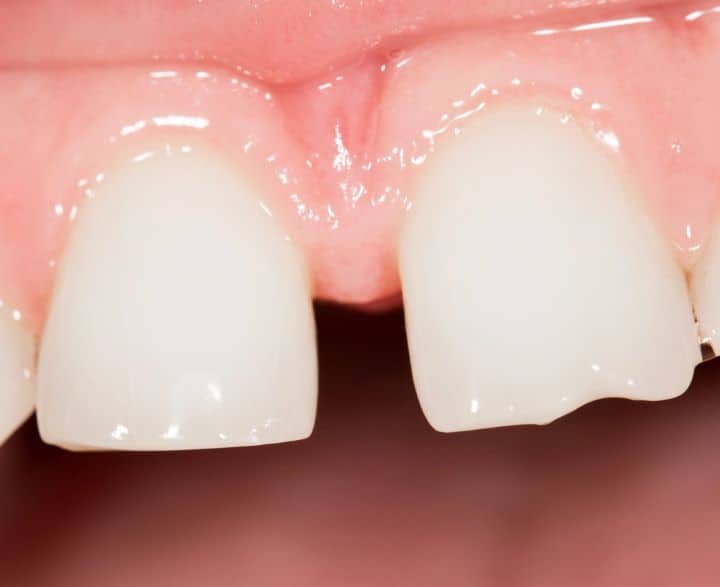
When gums recede, they tend to show more surface of the teeth, causing teeth to appear longer.
Healthy gum tissues protect your teeth by making a curtain-like collar around the root portion of the teeth. Gums continue to recede or fall below the gum line due to a bunch of causes, which we’ll discuss later.
But what’s important to note here is, that receding gums can expose a root of the tooth, which invites you to increased sensitivity and tooth decay.
How do Gums Recede?
According to the Journal of American Dental Association, our mouth has two types of pink tissue called gingiva, commonly known as gums.
One is an attached gingiva (gum) that’s thick and all pink in color and attached to the bone that holds your teeth. While the other is unattached gingiva (gum) that’s moveable, covering the lips and the cheeks.
A gingiva that makes the collar of the tooth is called marginal gingiva, which is a continuation of the attached gingiva. When gums recede, marginal gingiva is pulled back from the tooth.
Gum recession is a common presentation of gum diseases; however, there are several factors contributing to the recession.
How Would You Decide If Your Gums Are Really Receding?
Whenever your gums recede, you’ll probably start noticing a few changes in your oral cavity. Your teeth may appear yellower to you because the more yellowish root surface is being exposed.
The roots are covered with cementum, which is yellower in color. You’ll see your smile appearing darker.
Also, you’ll start noticing gaps between your teeth, also known as black triangles. The gums between your teeth have shrunk, leaving spaces between them, causing them to reveal a darker oral cavity.
How Would You Feel When Gums Are Receding?
Whenever you have gum recession, you need to remember that your gum is attached to your underlying bone. Therefore, whenever your gums fall, you are likely to lose your bone with it.
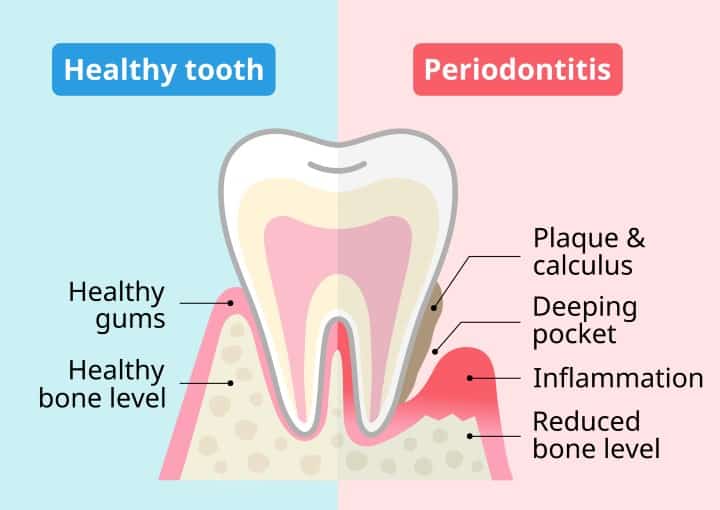
Your bone supports your teeth while holding them into the teeth sockets. When there’s a bone loss, you’ll lose support for your teeth, leading to tooth/teeth loss.
You may also experience swollen gums, which brings my attention to an underlying periodontal disease you might be suffering from.
Additionally, you’d see your teeth appearing longer than usual, which is affecting your appearance, and you might be seeking an immediate solution to it.
The problem that additionally comes with gum recession is that the tooth rot covered with cementum gets exposed. Unlike tooth enamel, which covers the crown portion of the tooth, cementum is soft and has no reparative or regenerative capabilities.
Due to this, patients often come to me with complaints of increased tooth sensitivity to cold water and beverages, increased sensitivity to brushing, and sharp pain whenever air hits the teeth.
Additionally, the tooth appears to wear away, initiating the toot caries. All this redirects you to the problem of gum recession. This happens because our tooth roots get exposed, which are more sensitive than our tooth crowns.
What are some risk factors for the gum recession?
All the factors that put you at the risk of developing gum diseases can put you at the risk of gum recession:
- Smoking
- Alcohol consumption
- Poor Oral Health
- Genetic Predisposition
- Diabetes
- Ill-fitting dentures/Oral Injuries
- Medications that cause dry mouth or xerostomia
- Certain diseases like HIV
- Hormonal changes in females
Why Cause Gums To Recede & How To Prevent It?

Gum disease and receding gums come hand in hand; however, several other causes contribute to falling gums. Here are a few of them:
Poor Oral Hygiene:
The plaque and tartar accumulating on and below the gum line due to improper brushing can lead to gum recession. If you don’t floss your teeth once daily or use an antiseptic mouthwash, you may still see a similar presentation.
At times, improper or aggressive tooth brushing can be a major cause of gum recession. If you brush too often and more complex, you’re probably being destructive rather than protective.
Remember, you need to brush your teeth and gums; that’s together a hard and soft tissue component. Don’t go too hard and wild on it.
The use of proper brushing techniques with gentle hand force can relieve the problem.
Crooked Teeth / Malalignment
According to the Journal of American Dental Association, crooked teeth are the major contributor to gum recession. The malalignment leads to neglected oral hygiene.
It causes more plaque and tartar to build up as toothbrush and floss may not be able to reach between the overlapped teeth. Also, an underbite, overbite or crossbite may cause unnecessary forces on the tooth, leading to gum recession.
A conventional orthodontics treatment with braces or invisible aligners can relieve the problem.
Teeth Grinding Habits
Certain parafunctional habits like clenching and bruxism can put patients at risk of receding gums.

The teeth grinding habits cause undue forces on the teeth surface, leading to the gums around the teeth receding and your tooth surfaces to wear away.
A nightguard, mouthguard, or oral splint can solve this problem.
Oral Conditions
Oral conditions like gingivitis and periodontitis contribute to gum recession. Book an appointment with a dentist to get the disease diagnosed and treated.
Maintain good oral hygiene and get yourself a professional tooth scaling and root planing treatment done. Also, don’t brush your teeth too hard, as it can irritate your gum tissue and bone, leading to tooth loss.
Systemic Conditions
Certain systemic conditions like diabetes can cause dry mouth or xerostomia. This contributes to more plaque and calculus buildup, which again leads to a cycle of bad oral health.
Control your blood sugar and see your dentist every 3 months to keep a check on your oral hygiene.
Home Remedies for Gum Growth
Once the gums recede, it’s nearly impossible to regrow them. However, stopping them with a few natural treatments is very possible:
Eucalyptus Oil:
This one works as a topical anti-inflammatory agent, which stops the gum from receding. It maintains oral health by stopping the gums from receding
Green Tea:
Green tea serves as a daily mouthwash if taken once or twice daily. It helps get rid of gum diseases.
Turmeric Gel:
Turmeric is a known anti-inflammatory and antioxidant agent and prevents gum recession. It prevents plaque buildup and allows healthy growth of gums.
Septilin
If you are afraid of anesthesia-induced deep cleaning of your teeth, Septilin is a magical herbal remedy for you. It is made up of guggul, licorice, and guduchi, which tend to eliminate inflammation by promoting oral health.
Oils
Oil pulling is one of the standard methods to eliminate bacteria by swishing coconut, sesame, or sunflower oil in the mouth for 5 minutes. Rinse your mouth with lukewarm water afterward, followed by a regular oral hygiene routine.
Grow Back Your Gums With Surgical Procedures
Fixing receding gums via surgical means is the last resort. It can highly improve esthetics while helping retain the teeth, which shows some amount of mobility. Surgical reverse receding gum by fixing the wobbly teeth into the arch while allowing the bone and gums to grow.
Gum Graft Surgery
A standard surgical procedure performed by a periodontist is usually to help restore the gum health of an individual.
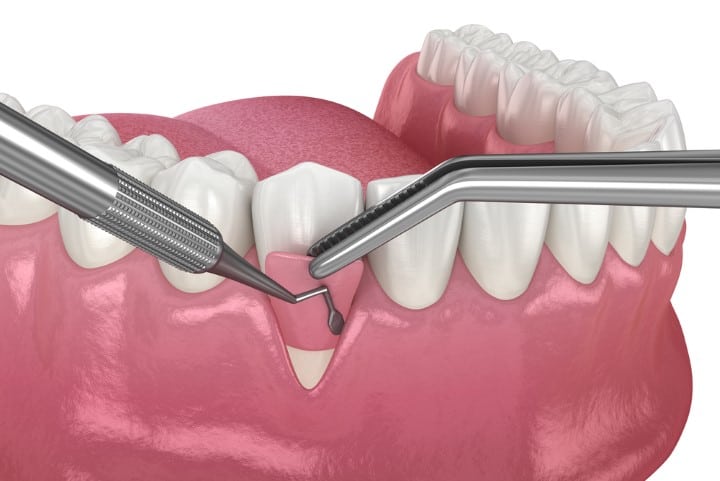
It is used to replace the missing gum tissue, which is usually grafted from the roof of your mouth. There are different types of grafts selected based on individual needs.
The procedure is performed under local anesthesia. This tissue is similar in thickness and keratinization to that of the gum tissue covering the teeth. Once the graft is placed in a particular position, the periodontist will stitch it precisely.
There are different types of graft surgeries:
- Connective tissue graft
- Free gingival graft
- Pedicle graft
Pinhole Surgery
The pinhole surgical technique is a newer and more innovative method to surgically treat gum recession. This one is directed towards a procedure where the surgeon or a periodontist will make a hole in the gum tissue over the exposed roots.
Then, he separates the gum from the tooth roots and then repositions it more towards the tooth crown. It positions the gums in a way where the gums are at a better orientation with no more recession if oral hygiene is restored.
Open Flap Scaling and Root Planing
Deep cleaning or flap-raised cleaning of your teeth is a requirement in the periodontal condition in a severe stage.
The procedure helps remove tartar and calculus below the gumline under local anesthesia. The gums are sutured back in place once the cleaning is done.
What are some of the cosmetic treatments for receding gums?
A few cosmetic treatments help instantly hide the recession or give you a satisfactory result even if you’re not very satisfied with the cosmetic results after surgical treatment of your gums.
Pink Porcelain or Composite:
This material mimics your natural gums and hides the shortcomings of your surgical-treated gums. The natural color of the gums that pink porcelain/composite provides is excellent in filling the gaps between your teeth and the gums.
Direct Composite Restorations:
Composite is a known material to mimic and cover tooth deficiencies. It covers the exposed tooth roots with a tooth-colored material to give you a confident smile
Removable Gum Veneers:
Acrylic and silicone gum veneers are removable gum tissues that again mimic the gum anatomy and color.
How much does gum grafting cost?
On average, gum grafting costs somewhere between $2000-$2500. However, the prices can increase to $4000 without insurance, while it may only cost $1000 on dental insurance.
Can my gums grow back?
Unfortunately, no. Your gums can’t grow back themselves. Once you lose your pink gum tissue due to gum recession, it can’t grow back on its own.
Only if the gum tissue is detached can your periodontist reattach it to the roots to help the tissues realign themselves according to the teeth. However, one can only regrow their gums after a surgical procedure.
What are some ways to prevent gum recession?
Regular dental check-ups or an appointment with your dentist will help you notice early signs of gum recessions, which are usually missed without professional help.
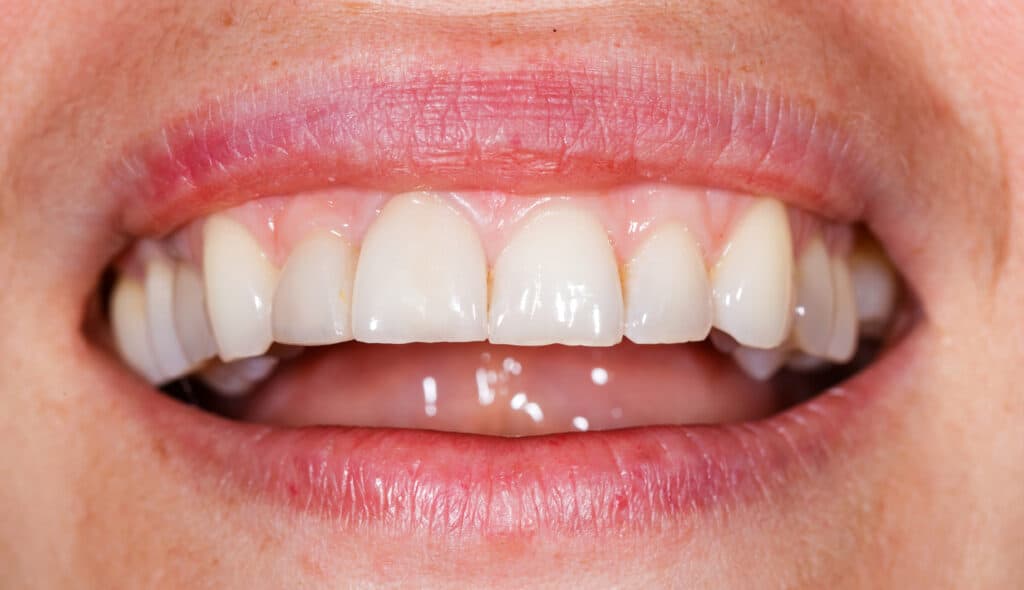
With regular dental cleaning, that’s scaling and root planing every 6 months, you’ll be able to get rid of the plaque and tartar that covers your teeth and gums above and below the gum line.
This will help you keep yourself from acquiring gum recession associated with periodontitis.
You may get yourself a night guard to overcome your problems of clenching. Also, you may get yourself an orthodontics treatment if you mind a malalignment in your teeth.

